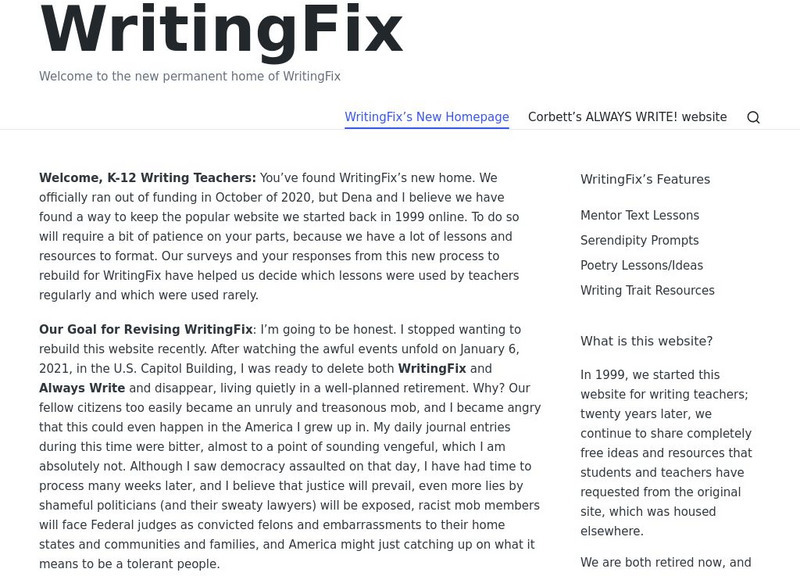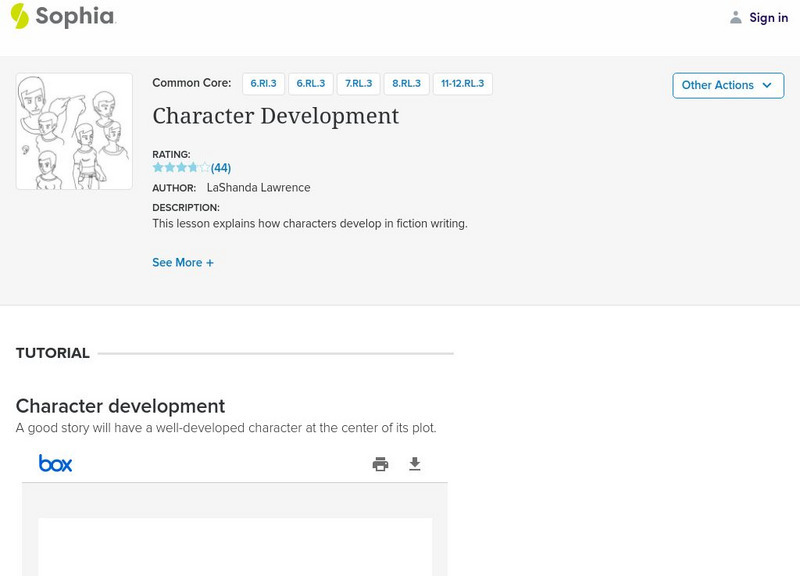Writing Fix
Writing Fix: Same Setting, Different Moods
In this lesson,writers will examine and discuss techniques that writers use to link moods to setting descriptions (Lord of the Flies by William Golding). Next, they will choose a mood and an interesting setting, and they will imagine a...
Writing Fix
Writing Fix: Creating a Second Person Choice Story
This lesson is designed to help students understand plot dimensions and literary devices while writing a multi-faceted short story that has many possible outcomes. For inspiration, students will analyze songs that tell stories for both...
Writing Fix
Writing Fix: Organizing a Story With Purposeful Paragraphs
In this lesson, students organize and design a narrative based on three developing ideas.
Writing Fix
Writing Fix: Just the Facts, Ma'am
Students read The Web Files by Margie Palatini and use the format to write three-scene detective stories of their own. Teacher instructions, student instructions, and student writing samples are provided, as well as an interactive...
Writing Fix
Writing Fix: A Chapter Book Writing Lesson: Creating a Parallel World
Inspired by the opening events in The Subtle Knife by Philip Pullman, students are asked to create an original parallel world that is similar to ours but different in certain ways. They will focus on the similarities and differences...
Writing Fix
Writing Fix: Action Words Bring Life to Setting Details [Pdf]
Students learn how to develop their ideas through description and action words through a story scavenger hunt. [PDF]
Polk Brothers Foundation Center for Urban Education at DePaul University
De Paul University: Center for Urban Education: I Can Analyze a Story or History [Pdf]
This graphic organizer can be used to help students analyze a story or a historical event. Students will look closely at the story's characters or people involved in the historical event. Then they will summarize the story or event, and...
Other
Mo Dept. Of Ed.: Analyzing and Evaluating Literary Works
Lesson plan designed for eleventh graders. Students analyze and evaluate a short story for elements of literary works such as theme, mood, word choice, imagery, tone, and main idea. Includes a student handout and a scoring guide. It...
BBC
Bbc Bitesize: Higher English
This site provides information about characters, plot, and setting of several different pieces of literature. It offers links to activities and tests on topic such as analysis and evaluation, creation and production, drama, novels, and...
ReadWriteThink
Read Write Think: Weaving the Multigenre Web
Learners analyze the elements of a novel in many different genres and then hyperlink these pieces together on student-constructed Websites.
Other
Georgia Perimeter: Choosing and Writing for an Audience
This resource goes extensively into the importance of establishing an audience when writing. It also defines types, how to choose, and how to write for an audience.
University of Victoria (Canada)
The U Vic Writer's Guide: Literary Term: Plot
This page offers a detailed overview of plot, including its various aspects and use in various types of literary works.
Houghton Mifflin Harcourt
Holt, Rinehart and Winston: Elements of Literature: Narrator Chart [Pdf]
Provides an overview of the importance of a narrator in a text and some brief exercises for analysis. Helps students learn more about the role of the narrator in literature, his/her voice, and influence on other characters and events.
Curated OER
National Park Service: Elements of Literature [Pdf]
A PDF glossary listing and defining literary elements.
Writing Fix
Writing Fix: Actions Speak Louder Than Words
After hearing and discussing an excerpt from Sharon Creech's Walk Two Moons, young scholars will plan to create a unique description of a character that uses memorable actions that "show" a person's character. They will brainstorm verbs...
Writing Fix
Writing Fix: Counting Up or Down Stories
The writer will brainstorm situations where individuals or people in a group count up or count down out loud together. Using the ending of chapter 5 of Wringer by Jerry Spinelli as a model, the writer will plan a story where someone (or...
University of Victoria (Canada)
The U Vic Writer's Guide: Literary Term: Character and Characterization
This site from The UVic Writer's Guide provides an excellent overview of character and characterization. Content also explores flat and round characters. RL.9-10.3 Analyzing Characters.
ReadWriteThink
Read Write Think: Exploring Perspective in Narrative
Interactive lesson which allows learners to determine the perspective or point of view of a story character by imagining actually spending a day in their "shoes." Based on Atticus's statement in "To Kill a Mockingbird." W.11-12.3, 3a,...
ReadWriteThink
Read Write Think: Character, Conflict, Resolution, Setting
This interactive lesson allows students to study and analyze the text concepts of character, conflict, resolution, and setting in a "Broadcast news," format.
E Reading Worksheets
E Reading Worksheets: Story Structure
In this learning module, students will learn more about the structure of a short story. Notes and video clips are provided to reinforce understanding of story structure. This module is designed to support Tier I, Tier II, and Tier III...
E Reading Worksheets
E Reading Worksheets: Narrative Essay Assignments
A number of narrative essay assignments are provided in this discussion. Assignments are provided to help scaffold the narrative essay writing process.
Sophia Learning
Sophia: Character Development
This lesson explains how characters develop in fiction writing. W.11-12.3d Sensory/precise lang narratives
Other
Write4 kids.com
This site provides a great deal of information on writing children's stories. Contains "Advice, instruction, insider tips, insight and inspiration."
Caro Clarke
Caro Clarke: What Is Conflict?
This is the sixth in a series of articles designed to help the new writer with their novel. This article focuses on conflict and how it effects the characters and the plot of the story. W.11-12.3a Narratives


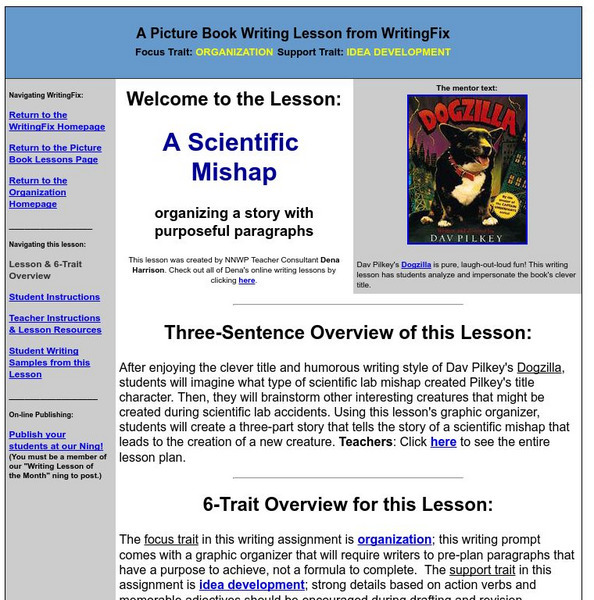
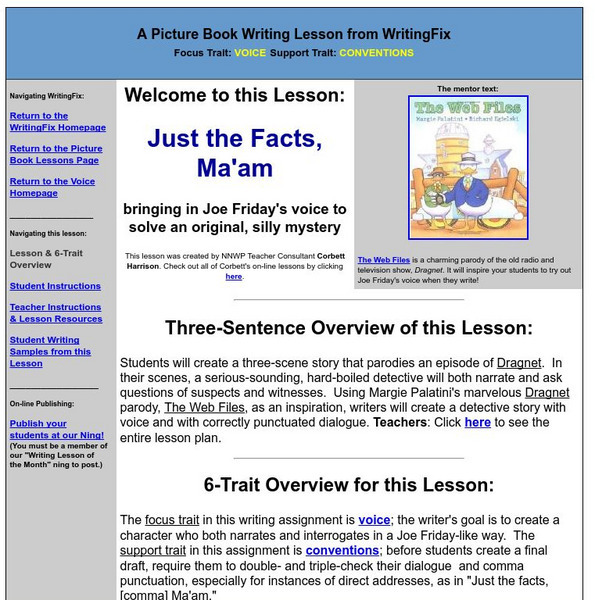

![Writing Fix: Action Words Bring Life to Setting Details [Pdf] Lesson Plan Writing Fix: Action Words Bring Life to Setting Details [Pdf] Lesson Plan](https://static.lp.lexp.cloud/images/attachment_defaults/resource/large/FPO-knovation.png)

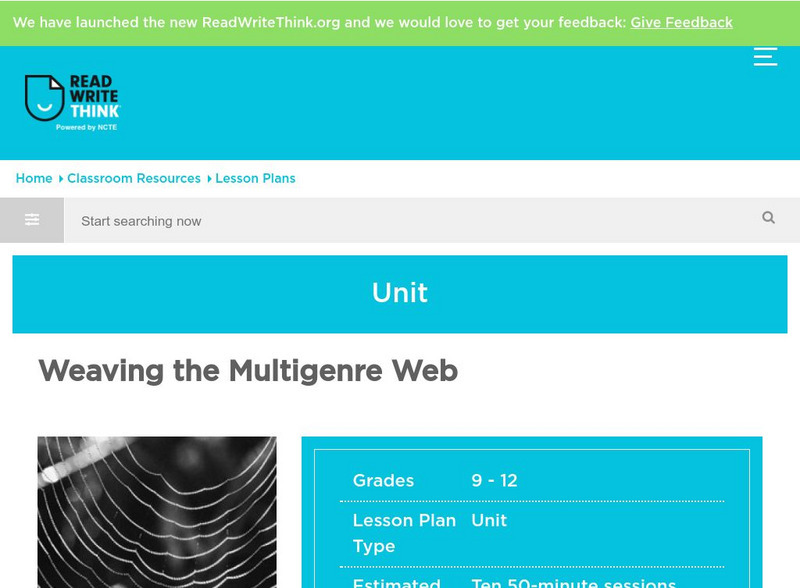


![Holt, Rinehart and Winston: Elements of Literature: Narrator Chart [Pdf] Graphic Holt, Rinehart and Winston: Elements of Literature: Narrator Chart [Pdf] Graphic](http://lessonplanet.com/content/resources/thumbnails/410058/large/bwluav9tywdpy2symdiwmduymc03nzcylxblamtwbi5qcgc.jpg?1589985144)
